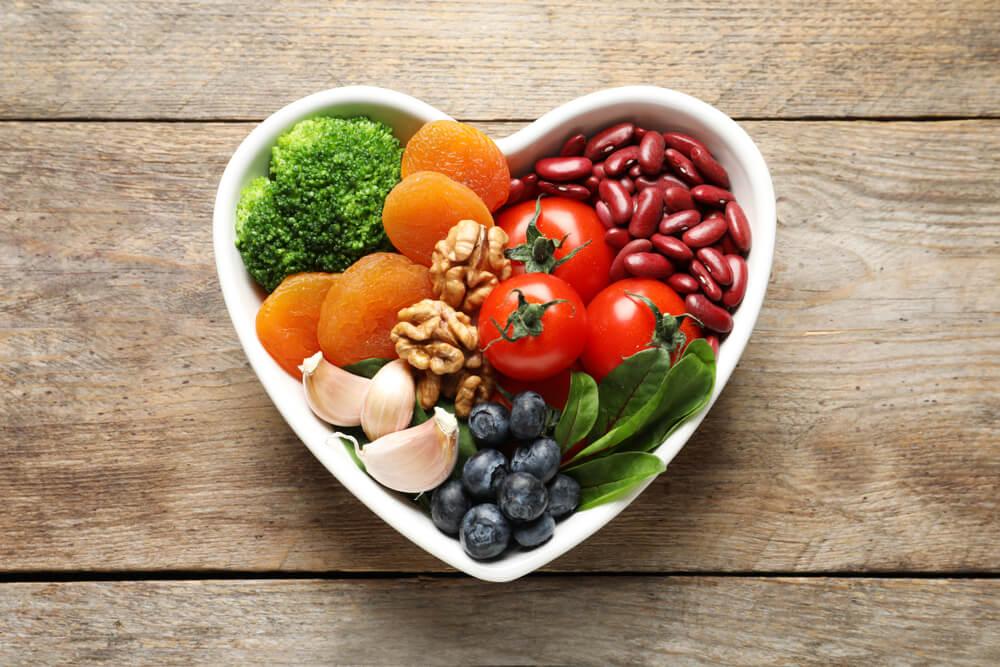Table of Contents
- Understanding the Basics of Healthy Eating on a Budget
- Essential Tips for Meal Planning and Grocery Shopping
- Smart Substitutions for Nutrient-Dense Foods
- Affordable and Wholesome Snack Ideas
- Embracing Seasonal Produce for Cost-Effective Nutrition
- Q&A
- Final Thoughts


Understanding the Basics of Healthy Eating on a Budget
Healthy eating doesn’t have to break the bank. In fact, with a little planning and creativity, you can enjoy nutritious meals while staying within your budget. Begin by prioritizing whole foods—these are generally less expensive than processed options. Fruits and vegetables are essential for a well-rounded diet, and purchasing seasonal produce can significantly lower costs. Consider shopping at local markets or discount grocery stores to find fresh ingredients at reduced prices.
When it comes to protein sources, look for budget-friendly options. Foods like beans, lentils, and chickpeas are not only affordable but also packed with essential nutrients. Incorporating eggs and canned fish, such as tuna or sardines, can provide a protein boost without exceeding your budget. Planning your meals around these staples can help you create delicious recipes that provide lasting satiety and nutritional value.
Meal planning is a game changer for managing your grocery expenses. By setting aside some time each week to outline your meals, you can create a cohesive shopping list that minimizes impulse buys and waste. Consider preparing large batches of soups or stews that can be frozen and consumed later. Here’s a simple breakdown of budgeting for a week’s worth of healthy meals:
| Food Item | Estimated Cost (£) | Meal Ideas |
|---|---|---|
| Brown rice (1kg) | 1.50 | Stir-fries, salads |
| Frozen mixed vegetables (1kg) | 1.00 | Soups, stir-fries |
| Canned tomatoes (4 pack) | 2.00 | Pasta sauces, curries |
| Lentils (500g) | 1.20 | Lentil soup, salads |
| Seasonal fruits (1kg) | 2.50 | Snacks, smoothies |
By focusing on these principles, you can embrace healthy eating without overspending. Remember, making small adjustments to your shopping habits and meal prep routines can lead to significant long-term savings while ensuring you and your family consume the nutrients needed for optimal health.


Essential Tips for Meal Planning and Grocery Shopping
Planning your meals effectively can help maintain a balanced diet without breaking the bank. Start by creating a weekly menu that includes breakfast, lunch, dinner, and snacks. This structured approach not only minimizes last-minute takeout choices but also allows for better ingredient management. To maximize savings, consider the following tips:
- Utilize seasonal produce: Buy fruits and vegetables that are in season to get the freshest options at lowered prices.
- Batch cook meals: Prepare larger quantities of meals to save time and costs; freeze leftovers for future use.
- Plan for versatile ingredients: Choose ingredients that can be used in multiple dishes, such as rice, beans, or mixed greens.
When grocery shopping, make sure to stick to your list to avoid impulse purchases, which can quickly add to your bill. Additionally, it’s beneficial to keep an eye out for discounts or bulk buying opportunities. Here’s a simple comparison of cost-effective pantry staples:
| Item | Average Cost (£) | Servings Per Item |
|---|---|---|
| Brown Rice | 1.50 | 10 |
| Canned Chickpeas | 0.70 | 3 |
| Pasta | 1.00 | 5 |
| Frozen Vegetables | 1.50 | 5 |


Smart Substitutions for Nutrient-Dense Foods
Making smart food choices doesn’t have to break the bank. By incorporating budget-friendly substitutes that are also nutrient-dense, you can improve your diet without sacrificing flavor or variety. Consider swapping out traditional items for alternatives that deliver more nutrition for less cost. Here are a few ideas to get you started:
- Brown Rice for White Rice: Brown rice provides more fiber and essential nutrients than its white counterpart, making it a filling and healthy base for meals.
- Canned Beans for Meat: Beans are an excellent source of protein and fiber. They’re often cheaper than meat and can be used in a variety of dishes, from stews to salads.
- Frozen Vegetables for Fresh: Frozen vegetables retain their nutrients and are typically less expensive than fresh produce, especially out of season.
When considering how to maximize your nutrient intake on a budget, you can also explore some innovative ideas for snacks and meals. For example, instead of chips, try air-popped popcorn, which is a whole grain and offers a satisfying crunch without the extra calories. Creating a table can further help you visualize these nutritious swaps:
| Traditional Food | Nutrient-Dense Substitute | Benefits |
|---|---|---|
| Potato Chips | Air-Popped Popcorn | Low in calories, high in fiber |
| Peanut Butter | Nut Butters (Almond/Cashew) | More vitamins and healthier fats |
| Fruit Juices | Whole Fruits | Higher in fiber, lower in sugar |
Lastly, embracing seasonal produce can make a significant difference in both cost and nutrition. Buying seasonal fruits and vegetables not only supports local farmers but also guarantees fresher and more flavorful options. These can often be found at farmers’ markets or discounted at grocery stores approaching their sell-by date. By getting creative in the kitchen and opting for these smart substitutions, you can enjoy a healthier lifestyle while keeping your expenses in check.


Affordable and Wholesome Snack Ideas
Eating healthily doesn’t have to break the bank, and there are plenty of delicious options that are both nutritious and affordable. Homemade granola bars are a perfect choice: simply combine oats, honey, and your favorite nuts or dried fruits. Cut them into bars and enjoy a snack that’s rich in fiber and energy. These can also be customized to suit your taste and dietary needs, making them a wonderful go-to for busy days.
Another excellent idea is vegetable sticks with hummus. Carrots, cucumber, and celery are budget-friendly and can be paired with homemade hummus made from chickpeas, tahini, and lemon juice. This combination not only enhances your nutrient intake but also keeps you full for longer. You can prepare a batch of hummus and store it in the fridge for a quick grab-and-go snack throughout the week.
| Snack Idea | Ingredients | Estimated Cost |
|---|---|---|
| Homemade Granola Bars | Oats, honey, nuts, dried fruits | £3.00 for 12 bars |
| Vegetable Sticks & Hummus | Carrots, cucumber, celery, chickpeas, tahini | £2.50 for multiple servings |
| Fruit & Nut Mix | Mixed nuts, dried fruits | £2.00 for a week’s supply |


Embracing Seasonal Produce for Cost-Effective Nutrition
Incorporating seasonal produce into your meals is an excellent way to enjoy fresh, flavorful ingredients while keeping your grocery bills in check. By choosing fruits and vegetables that are in season, not only do you support local farmers, but you also benefit from produce that is at its peak in terms of taste and nutrition. Seasonal items tend to be more abundant, leading to lower prices in your local markets. Here are some additional benefits:
- Improved freshness: In-season fruits and vegetables are often harvested at the right time, ensuring better flavor and nutritional content.
- Cost savings: When produce is in season, prices drop significantly, making it an economical choice.
- Greater variety: Embracing the seasons allows you to diversify your meals with a wide array of fruits and vegetables.
Planning your meals around seasonal produce can also spark creativity in the kitchen. A trip to the local farmer’s market can inspire new dishes and culinary experiments that might not have been on your radar. For instance, consider whipping up a hearty autumn squash soup or a refreshing summer salad rich in heirloom tomatoes. And remember, many seasonal items can be preserved for later use, such as freezing berries or canning fruits, extending their availability throughout the year.
| Season | Fruit | Vegetable |
|---|---|---|
| Spring | Strawberries | Asparagus |
| Summer | Peaches | Zucchini |
| Autumn | Apples | Pumpkin |
| Winter | Oranges | Brussels Sprouts |
Q&A
Q&A: Healthy Eating on a Budget in the UKQ1: Is it really possible to eat healthily on a budget in the UK? A: Absolutely! Eating healthily on a budget is not only possible but also quite achievable with a bit of planning. By focusing on seasonal produce, incorporating more plant-based meals, and being strategic about your grocery shopping, you can maintain a nutritious diet without breaking the bank.Q2: What are some tips for grocery shopping while keeping costs down? A: Here are a few tips to consider:- Make a meal plan: Plan your meals for the week based on what’s on sale and in season.
- Create a shopping list: Stick to it to avoid impulse buys.
- Shop at local markets: Often, you can find fresher and cheaper produce.
- Buy in bulk: Foods like grains, beans, and nuts are usually cheaper in larger quantities.
- Look for discounts: Check for deals on items that are soon to expire—you can cook and freeze them for later use.
- Whole grains: Brown rice, quinoa, and whole wheat pasta.
- Legumes: Lentils, chickpeas, and kidney beans are great sources of protein and fiber.
- Canned goods: Tomatoes, fish, and beans can be very versatile.
- Frozen vegetables and fruits: They are often cheaper and just as nutritious as fresh ones.
- Mix with meals: Add spinach to your morning smoothie, or serve roasted vegetables as a side at dinner.
- Choose seasonal produce: It’s often cheaper and tastes better when in season.
- Try vegetarian meals: Incorporate meals like veggie stir-fries or salads, which can be very cost-effective.
- Budgeting apps: Look into platforms like YNAB (You Need A Budget) or Mint to track your expenses.
- Recipe apps: Apps such as Tasty and Yummly allow you to filter recipes based on ingredients you already have, minimizing waste.
- Grocery store apps: Many supermarkets have their own apps that offer exclusive discounts and digital coupons.
- Vegetable stir-fry: Use seasonal veggies and serve over rice or noodles.
- Chickpea curry: A nutritious dish that can be made with affordable ingredients.
- Oven-baked potatoes: Top them with beans, cheese, or any leftover veggies for a hearty meal.
- Use leftovers creatively: Transform them into soups, salads, or wraps.
- Compost: If you have scraps that can’t be used, consider composting to reduce waste.
- Proper storage: Learn how to store fresh produce correctly to prolong its life.




0 Comments